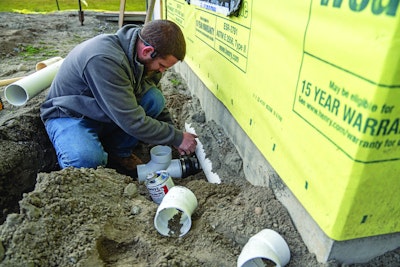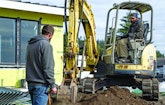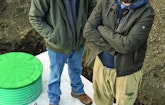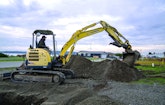
Seth Miller connects PVC piping to a new concrete septic tank during a residential installation job. (Photos by Stephen Brashear)
Ben Miller gives an interesting description of the soils on Whidbey Island, located north of Seattle in the Puget Sound, where he and his brother Seth operate their onsite installation business.
“I like to refer to it as Neapolitan ice cream,” says Ben. “You dig a hole in...










